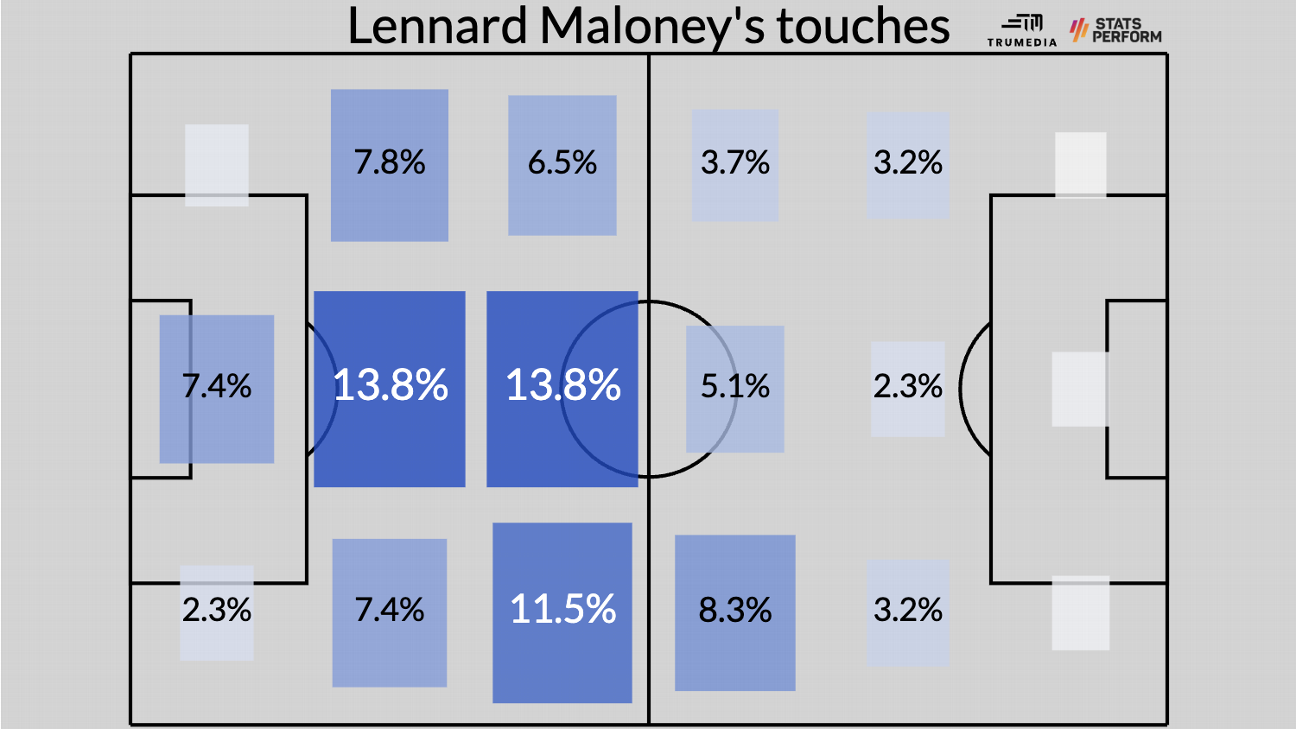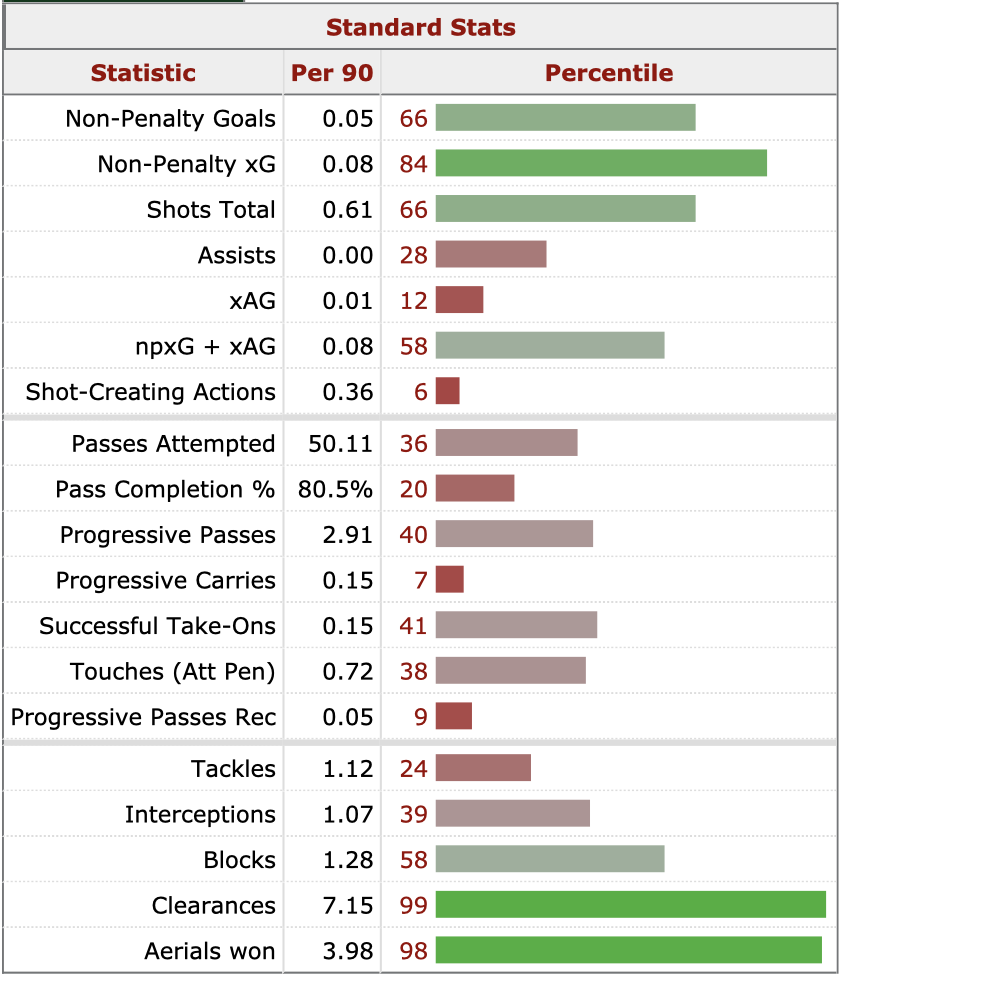We’re five matchdays into the Bundesliga season, and everything is confusing. The vibes are mostly dour for Bayern Munich and Borussia Dortmund, who are unbeaten through 10 combined league matches. Bayer Leverkusen looks spectacular, but all anyone can seem to talk about is where their manager, Xabi Alonso, will coach next. (All signs point to Real Madrid.) Oh, and RB Leipzig is in the middle of an epic rebuild, but is also in some of its best form ever.
– Stream on ESPN+: LaLiga, Bundesliga, more (U.S.)
With an ENORMOUS Saturday matchup approaching — Bayern Munich at RB Leipzig (9:30 a.m. ET, ESPN+) — let’s make sense of the bigger storylines and narrative that have formed thus far.
Now that Thomas Tuchel has taken off his Angry Football Director hat and is focusing on coaching, things are looking up in Bavaria.
Tuchel seemed to spend much of the summer trying to convince Bayern’s decision-makers to overpay for every single player in the Premier League, from Declan Rice to Kyle Walker, from Scott McTominay to, eventually, Fulham’s João Palhinha. A move for Palhinha fell apart at the last second, and Bayern didn’t end up getting Tuchel the holding midfielder he was so desperately seeking. But with the transfer window closed, Tuchel has evidently been able to step back and realize that, well, his roster is still loaded. And they did still land Harry Kane.
Since a season-opening Super Cup loss to RB Leipzig — one for which Kane played only a tiny role, as it was his first full day in Munich — Bayern have outscored opponents 26-7 over six wins and one draw. Saturday’s 7-0 drubbing of Bochum screwed up my plans to compare Tuchel’s early Bayern to recent iterations, but let’s do it anyway.
Bayern attack in league play:
2021-22 (Julian Nagelsmann’s first season): 2.9 goals per game, 2.8 xG, 0.19 shots per possession, 0.14 xG per shot
2022-23 (Tuchel replaced Nagelsmann late): 2.7 goals per game, 2.2 xG, 0.19 shots per possession, 0.12 xG per shot
2023-24 (all Tuchel): 3.6 goals per game, 3.1 xG, 0.25 shots per possession, 0.14 xG per shot
Obviously the averages are skewed by that 7-0 result, but we can discern that Bayern are definitely attempting more shots. We’ll see if the improved shot quality (in terms of xG per shot) remains once the schedule gets tougher.
The addition of Kane seems to have done two primary things to the Bayern attack: (1) give them one of the world’s best goal-scorers up front (obviously) and (2) unlock Leroy Sané and Alphonso Davies in particular. In just seven matches and 551 minutes in all competitions, Kane has produced eight goals and four assists. He’s on pace for 48 goals and 20 assists in league play alone, which is probably unsustainable, but only probably. He’s never had these teammates in this system before.
At the moment, Sane is also pulling off one hell of a Son Heung-min impression. The 27-year old has scored five goals with 13 chances in all competitions and while Serge Gnabry is out for a few weeks with a fractured arm, Sane has been quite comfortable as the primary star complement up front.
Meanwhile, Davies is rolling. He has produced between two and five assists over each of the last four Bundesliga seasons, but he’s already at three in 2023-24. Two have gone to Kane, one to super-sub Mathys Tel.
If there’s a concern, it comes, as always, in defense, even if the overall numbers are fine.
Bayern defense in league play:
2021-22: 1.1 goals allowed per game, 1.2 xG allowed, 0.09 shots allowed per possession, 0.12 xG per shot
2022-23: 1.1 goals, 1.1 xG, 0.10 shots per possession, 0.12 xG per shot
2023-24: 0.8 goals, 0.8 xG, 0.09 shots per possession, 0.09 xG per shot
The early league schedule has featured only one particularly strong opponent (Bayer Leverkusen), and Bayern allowed only two combined goals against Werder Bremen, Augsburg, Borussia Monchengladbach and Bochum. But in three matches against better teams — one win, one draw and one loss — Bayern has leaked opportunities.
vs. RB Leipzig (German Super Cup): three goals allowed from 10 shots worth 1.8 xG
vs. Bayer Leverkusen: two goals allowed from 13 shots worth 2.1 xG
vs. Manchester United (Champions League): three goals allowed from nine shots worth 1.7 xG
Goalkeeper Manuel Neuer’s continued absence has been particularly noticeable in these games, but even if Bayern have allowed more goals than xG suggests, they’ve still allowed shots worth an average of 1.9 xG per match! That’s far too much, even for a team capable of keeping up in a track meet against anyone.
For all of Tuchel’s machinations, then, Bayern resembles, well, Bayern at the moment: ruthless in attack, entertaining as hell, and occasionally glitchy in the back. We’ll learn more about whether their quality is at typical Bayern levels, especially away from home, in the coming weeks — they play at RBL on Saturday, they visit optimistic Copenhagen and Galatasaray teams in the Champions League in October, then they play at Borussia Dortmund in early November.
We’ll also learn more about a couple of particularly good-looking title rivals in that span, too.
Nearly one calendar year ago, Bayer Leverkusen replaced manager Gerardo Seoane with Xabi Alonso. The results since have established a pretty definitive top four in the Bundesliga. Borussia Dortmund has pulled in 57 points in that span, with Bayern on 56, RB Leipzig 56 and Leverkusen 54. RBL was a slow start away from making last season’s epic Bayern-Dortmund title battle a three-way race, while Leverkusen rebounded from an absolutely dreadful start to snare a Europa League spot. And after a nearly perfect summer transfer window, they’re unbeaten to start 2023-24.
Through seven matches in all competitions, Leverkusen have outscored opponents 29-6. The only team to hold them under three goals was Bayern in Munich, but they still managed a 2-2 draw in that one, and it felt in no way like a fortunate result for the visitors.
Alonso has worked wonders, but he’s also got one hell of a roster to work with. This team was good enough to finish third in 2021-22 despite missing young star Florian Wirtz for the home stretch of the season, and while the fall 2022 funk was disastrous, a lack of talent clearly wasn’t an issue.
This summer, they flipped the rights to star winger Moussa Diaby to Aston Villa for €55 million and used the proceeds to bring in striker Victor Boniface (Union St. Gilloise) and veterans Jonas Hofmann (Borussia Monchengladbach) and Granit Xhaka (Arsenal). We haven’t seen much from late-window addition Nathan Tella (Southampton) yet, but Hofmann and Xhaka have brought maturity, physicality and, especially in Hofmann’s case, production to the table. Boniface, meanwhile, has been an absolute revelation.
Sometimes even the best forwards go through finishing funks, but one thing that is more within their control is the pure volume of shots they’re able to create. In that sense, Boniface has been the best forward in the Bundesliga — better than even Kane. (Hofmann has thrived, too.)
Bundesliga shot attempts, 2023-24:
Victor Boniface, Bayer Leverkusen: 38 in 442 minutes (six goals)
Harry Kane, Bayern Munich: 22 in 438 minutes (seven goals)
Serhou Guirassy, VfB Stuttgart: 22 in 432 minutes (10 goals)
Kevin Stöger, Bochum: 18 in 414 minutes (two goals)
Roland Sallai, Freiburg: 17 in 370 minutes (one goal)
Tim Kleindienst, Heidenheim: 17 in 441 minutes (two goals)
Leroy Sane, Bayern Munich: 16 in 430 minutes (four goals)
Kevin Behrens, Union Berlin: 15 in 419 minutes (four goals)
Jonas Hofmann, Bayer Leverkusen: 14 in 439 minutes (two goals)
Donyell Malen, Borussia Dortmund: 14 in 378 minutes (three goals)
That’s James Harden-level shot volume from Boniface.
Alonso has quickly been able to integrate newcomers like Boniface, Hofmann, Xhaka and left midfielder Alex Grimaldo and defender (and Bayern-loanee) Josip Stanisic into a squad that already featured high-level contributors like Florian Wirtz and Jeremie Frimpong. Youngster Amine Adli is finding another gear. This squad is young, but absolutely loaded. Now we just have to find out if it has staying power over a long season.
Leverkusen looked like Bayern’s equal in a 2-2 draw at Allianz on Sept. 15, but a month earlier, RB Leipzig looked like Bayern’s outright superior in the same arena.
RBL’s offseason was a caricature of everything we’ve gotten used to with the club. We often see them losing bright young talents to big clubs and replacing them with equally bright young talents (including quite a few from sister club RB Salzburg). But they lost three particularly high-upside players to Premier League heavyweights this summer — Christopher Nkunku (Chelsea), Dominik Szoboszlai (Liverpool) and Josko Gvardiol (Manchester City) — for a combined €220 million. Surely that had to result in a step backward, right?
So far, the answer is a resounding no. With newcomers like winger Xavi Simons (on loan from PSG), forwards Loïs Openda and Benjamin Sesko, midfielder Nicolas Seiwald and defender Castello Lukeba starring next to holdovers like Dani Olmo, David Raum, Benjamin Henrichs and Mohamed Simakan, this team somehow hasn’t missed a beat. They pummeled Bayern early, they handled Young Boys 3-1 in their Champions League debut despite allowing an early goal, and their only blemish thus far was a 3-2 loss in Leverkusen.
Leverkusen’s rebound under Alonso has been incredible, but RBL has been, at worst, tied for the best team in Germany since Marco Rose came aboard last fall. They have a major statement opportunity against Bayern on Saturday.
Now let’s talk about the biggest contradiction in the league. Borussia Dortmund have put off absolutely dour vibes over the last couple of months. It’s hard to blame them, right? After the ultimate final-match gut-punch last May — their home draw with Mainz, which allowed Bayern to steal an 11th straight league title — it’s almost forgivable for them to begin this year with a hangover.
No one seems to be playing particularly well outside of Donyell Malen, veterans Mats Hummels, Marco Reus, Julian Brandt and maybe goalkeeper Gregor Kobel. Forwards Sebastian Haller and Niclas Füllkrug (signed late in the transfer window) have been invisible, combining for zero goals and only 10 shot attempts in 438 combined minutes in the Bundesliga and Champions League. Worse, their presence has pushed youngster Youssoufa Moukoko to the bench — he’s played just 47 minutes with one shot attempt in these competitions.
It feels like nothing’s working and yet, their only loss this season was at PSG in the Champions League. They’re two points behind Bayern and Leverkusen and one behind RBL. They had some genuinely dire moments at the start of the season; they were lucky to beat Cologne at home and suffered miserable draws with Bochum and Heidenheim. But the damage from that run of form was minimal. If they find a rhythm moving forward — and recent wins over Freiburg and Wolfsburg suggest they could — then they could muster another title push.
Fighting out of a finishing funk would also help. While Malen, Reus and Brandt have been good — they’ve got six league goals from shots worth 3.3 xG — everyone else has struggled, scoring three goals from shots worth 8.5. That includes Fullkrug and Haller, plus Karim Adeyemi (zero goals, three shots, 0.6 xG), Marcel Sabitzer (zero goals, five shots, 0.7 xG) and youngsters Moukoko (zero goals, one shot, 0.1 xG) and Jamie Bynoe-Gittens (zero goals, four shots, 0.4 xG).
Again, the actual damage has been minimal, but this team has still been less than the sum of its parts.
There will forever be underdog stories lurking in the Bundesliga, and we’ve got a couple of interesting ones so far in 2023-24.
Hoffenheim has combined exciting youth (20-year old Maximilian Beier already has four goals) with veteran experience (33-year old goalkeeper Oliver Baumann, 32-year old forward Andrej Kramaric, 31-year old midfielder Pavel Kaderábek, 30-year old defender John Brooks) to win four straight league matches. They’re one point out of first.
So, too, is VfB Stuttgart and if you’re a believer in xG justice, you are pleased by these developments. Stuttgart in particular deserved far more than it got from the soccer gods last year. They had the seventh-best xG differential in the league in 2022-23, but had to rally late to finish even 16th in the table and had to beat Hamburg in the relegation playoff to avoid falling to the second division.
This time around, they’ve got the third-best xG differential in the league, and they’re third in the table. All’s right with the (analytics) world. Granted, they’re burning a little too hot in attack — they’ve scored 17 goals from shots worth 9.9 xG — but they’ve also allowed seven goals from shots worth 4.8 xG, and their fundamental stats are good. They’re fifth in shots per possession (0.17), and 15.8% of their shots have been worth at least 0.3 xG (second). They’re creating loads of great opportunities, and when Serhou Guirassy is on the end of those opportunities, they go into the net.
Guirassy is on an almost unprecedented hot streak. He’s scored 10 goals in five matches, and they’ve come in all shapes and sizes. He’s got three goals scored from within 10 meters, and three from 19 or more. He’s scoring on screamers and dinks. He’s turned a solid Stuttgart transition attack into just about the best one in Europe at the moment.
Stuttgart lost defender Konstantinos Mavropanos (West Ham) and midfielder and captain Wataru Endo (Liverpool) to the Premier League and lost fullback Borna Sosa to Ajax, too, but they acquired four instant regulars — goalkeeper Alexander Nübel (loan from Bayern), defensive midfielder Angelo Stiller (Hoffenheim), attacking midfielder Woo-yeong Jeong (Freiburg) and Guirassy (Rennes) — for a combined €17 million. That’s good work.
We’ll see what kind of staying power Die Roten can manage, especially when Guirassy almost inevitably cools off a bit. But the underlying stats are rock solid.
One noticeable trend over the first few weeks of the season: GOALS!
Scoring is up in every major league — up 2.0% in Ligue 1, 3.9% in Serie A, 7.0% in the Premier League, 14.5% in the Bundesliga and 16.7% in LaLiga — and considering the Bundesliga was already the most prolific of these leagues, a 15% increase is pretty incredible. Germán teams are currently averaging an absurd 1.8 goals per match.
Granted, penalties have accounted for some of this: Teams in these five leagues are scoring 0.16 penalty goals per match this season, up from 0.12 in 2022-23. But that only accounts for part of the increase.
It would stand to reason that, in an increasingly offense-friendly environment, two defense-friendly overachievers might be struggling a bit. After finishing fourth and fifth, respectively, in the Bundesliga last season, Urs Fischer’s Union Berlin and Christian Streich’s Freiburg are currently 10th and eighth, having combined for the same 13 points that Bayer Leverkusen has amassed by itself.
Including a 1-0 loss to Real Madrid in their Champions League debut, Union has currently lost four games in a row. In that span, opponents have scored eight goals from 65 shot attempts; obviously a lot of that came from the match in Madrid — the European giants attempted 32 shots worth 3.8 xG, and Union was lucky to nearly snare a 0-0 draw.
But Bundesliga opponents are thus far attempting 10% more shots and with a 15% higher xG-per-shot average. Hoffenheim scored on a penalty and created a trio of short-range, high-quality chances, and RB Leipzig managed 14 shots as well. Losing 2-1 to Wolfsburg was a bit of a fluke (Wolfsburg scored twice from eight shots worth just 0.4 xG), but they were outplayed in the other three losses.
Freiburg has been both shaky and unlucky. They’ve attempted shots worth 7.8 xG and allowed shots worth 7.2, but that’s resulted in five goals scored and 10 allowed. Against Borussia Dortmund and Stuttgart, they allowed shots worth 4.1 xG (too high) but gave up nine goals. The xG gods were friendly in their Europa League-opening win over Olympiacos — score: 3-2 for Freiburg, xG: 2.4-1.6 for Olympiacos — but as with Union, opponents are indeed attempting more shots than they did last year.
With Bayern looking like Bayern, Dortmund weathering its early storm, RB Leipzig and Bayer Leverkusen both looking fantastic and other upstarts doing upstart things, a top-five repeat from either club will be awfully difficult.
The Bundesliga remains one of the best leagues in the world for breaking in young talent. Thirty-six players aged 20 or younger have combined to play 4,215 minutes and score 14 goals with 10 assists through five matchdays. Here’s my stab at a full 10-man lineup of 20-and-unders. (Yes, 10. No goalkeeper has played yet.)
Fullbacks: Joe Scally (20, Borussia Monchengladbach) and Luca Netz (20, Borussia Monchengladbach). I guess the fact that Gladbach has a pair of exciting, but extremely young, fullbacks explains a lot about how their season is going so far. The club has quite a few exciting youngsters, but after a recent talent exodus, guys like Scally and Netz are playing increasingly important roles.
Center-backs: Castello Lukeba (20, RB Leipzig) and Clemens Riedel (20, Darmstadt). A mid-August addition from Lyon, Castello Jr. has quickly become one of the best-passing center backs in the league. Riedel, a youngster for a Darmstadt team that has to do a lot of defending, has thus far avoided getting overwhelmed; he’s also a high-level passer.
.jpg)
The beautiful game lives here. Stream top leagues, tournaments and teams.
Sign up for ESPN+
FRIDAY, OCT. 20 (all times ET)
• Dortmund vs. Werder Bremen (2 p.m.)
• Rotherham vs. Ipswich Town (3 p.m.)
• Osasuna vs. Granada (3 p.m.)
SATURDAY, OCT. 21 (all times ET)
• Wolfsburg vs. Leverkusen (9 a.m.)
• Norwich City vs. Leeds United (10 a.m.)
• Sevilla vs. Real Madrid (12 p.m.)
• Mainz vs. Bayern Munich (12 p.m.)
• PSV vs. Fortuna Sittard (1 p.m.)
• Feyenoord vs. Vitesse (3 p.m.)
• Celta Vigo vs. Atletico Madrid (3 p.m.)
Midfielders: Hugo Larsson (19, Eintracht Frankfurt), Brajan Gruda (19, Mainz), Farès Chaïbi (20, Eintracht Frankfurt). Admittedly, thriving midfielders are a bit harder to find — among the three here, only Larsson has played more than 140 minutes thus far — but all three are carving space in their respective rotations, and Larsson has combined 24 ball recoveries with 122 pass completions in 253 minutes. He’s a solid defender, too.
Attackers: Florian Wirtz (20, Bayer Leverkusen), Xavi Simons (20, RB Leipzig), Maximilian Beier (20, Hoffenheim). Maybe the most well-known young attackers — Bayern’s Jamal Musiala and Borussia Dortmund’s Youssoufa Moukoko — haven’t done much yet, but there’s still too much bright attacking talent to keep track of. Wirtz has become more of a complementary piece during Boniface’s hot streak, but he’s still got a goal and two assists (from 19 chances created) in 405 minutes. Beier, meanwhile, has gotten new national team coach Julian Nagelsmann’s attention with four goals in just 245 minutes for a surging Hoffenheim.
Simons, meanwhile, is flying. After combining 22 goals and 12 assists for PSV last season, he’s currently on pace for 20 goals and 27 assists for RBL — he’s got three and four, respectively, in just 390 minutes thus far. PSG still holds his rights and sent him away only on loan, but they evidently felt he wasn’t a fit with their first team yet. I disagree.
Super sub: Mathys Tel (18, Bayern Munich). Wear an opponent down, then bring in the teenager late to finish you off. It’s working beautifully for Tel and Bayern thus far: In just 81 league minutes over five matches, Tel has produced three goals and an assist. He scored inside three minutes against Manchester United in the Champions League last week, too. He was already developing pretty well, and now he gets to study Kane for the next couple of years. New RB Leipzig addition Benjamin Sesko has two goals in 122 minutes, too. Next to anyone other than Tel, that would be impressive.
Despite Borussia Dortmund’s Gio Reyna missing the early parts of the season with a summer foot fracture, we’ve still seen eight Americans log minutes in the Germany top division this year.
Lennard Maloney, Heidenheim: Maloney might be a new name for some. The former Union Berlin and Borussia Dortmund prospect moved to what was then second-division Heidenheim in 2022 and played a big role in the club’s first ever move to the top division. The 23-year old dual-national is an old-school shop wrecker of a defensive midfielder. He knows his zone of the pitch.
He spent about half his time at center-back last season and like Heidenheim, he’s holding his own thus far. He’s also been a mainstay, playing 444 of a possible 450 minutes.
 (Data courtesy of TruMedia / Stats Perform)
(Data courtesy of TruMedia / Stats Perform)
John Brooks, Hoffenheim: He’s back! After half a year as a Benfica backup, the 30-year old returned to Germany last winter, and he has played 413 minutes and a key role in Hoffenheim’s bright start. He scored in their 3-1 win over Wolfsburg, and his dominating with his 6-foot-4 frame. He’s winning 70% of his aerial duels and 55% of overall duels. He remains elite at being big.
 (Data courtesy of FBRef)
(Data courtesy of FBRef)
Joe Scally, Borussia Monchengladbach: He’s entering his third season as a Bundesliga regular, and he’s still only 20. This year has been a bit of a struggle for both Scally and Gladbach, which lost a lot more talent than it brought in and is laboring at the relegation line early on. But he’s still a safe 1v1 defender and safe passer.
Jordan Pefok, Borussia Monchengladbach: Loaned from Union Berlin in late-August, the 27-year old has made three appearances for Gladbach and in his lone 90-minute effort, a 3-3 draw with Darmstadt, he scored and completed 18 of 20 passes. He remains in a finishing funk — in his last 24 matches in all competitions (mostly off the bench), he’s scored just once from 18 shots worth 3.3 xG — but he’s started reasonably well in Monchengladbach.
Brenden Aaronson, Union Berlin: On loan from Leeds United, the 22-year old does the one thing Urs Fischer requires over everything else — running hard and constantly — really well. He’s a pressure machine, but he’s still trying to figure out how to fit into this direct attack. Aaronson has recorded just one shot attempt with one chance created in 190 minutes in all comps.
Paxten Aaronson, Eintracht Frankfurt: The younger of the Fightin’ Aaronsons, the 20-year old has played only 27 minutes in three brief Bundesliga appearances. But he assisted Niels Nkounkou’s game-tying late goal in a draw with Cologne, and in 128 Conference League minutes, he’s been an intriguing string-puller, completing 92% of his passes in the attacking third and creating a pair of chances. Eintracht is easing him in, but he remains an interesting prospect.
Kevin Paredes, Wolfsburg: The 20-year old made 24 appearances in all comps for Niko Kovac’s side last season but was held back by a preseason thigh injury. He’s played just 23 minutes thus far, but it’s still been a noteworthy season: He made his USMNT debut on September 13 against Oman.
Damion Downs, Cologne: Another dual-national, the 20-year old forward has been on the radar of both the U.S. and German national teams. He made his Cologne debut on Saturday, completing three passes with one shot attempt in seven minutes against Werder Bremen.












